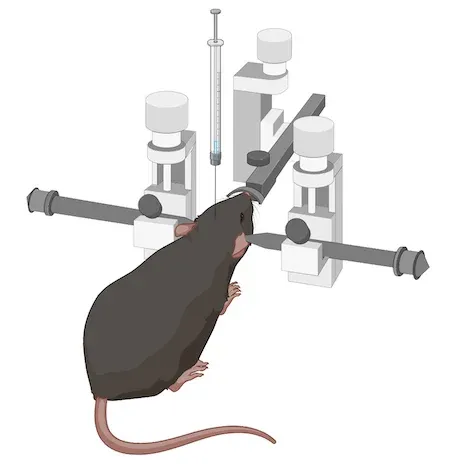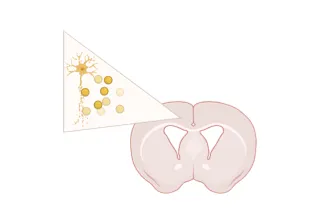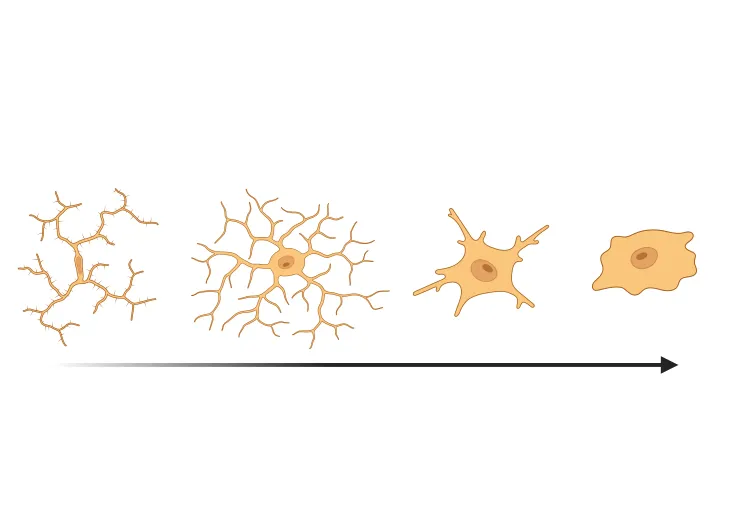AAV Synuclein (AAV-Syn) Model Overview
For this Parkinson's disease model, we perform unilateral stereotaxic inoculation of AAVs overexpressing A53T mutant human alpha-synuclein into the substantia nigra of C57BL/6 mice at ~3 months-of-age. This mouse model reproduces several key features of human Parkinson's disease, including:
- A high degree of loss of dopaminergic neurons in the substantia nigra pars compacta
- Dopaminergic denervation of the ipsilateral striatum
- Aggregates of phosphorylated alpha-synuclein in cell bodies and neurites
- Activated microglia (Read More in our Presentation - Microglial Activation in an α-Synuclein Mouse Model of Parkinson's Disease)
- Reactive astrocytes
- Motor dysfunction
AAV-Syn Model Generation
A general schema for the model generation is:

For this specific model, we use C57BL/6 mice at ~12 weeks-of-age. We then perform stereotaxic injection of AAV vectors into the vicinity of the substantia nigra. We use digital stereotaxic devices with automated microinjectors for high accuracy & precision.
Studies using this model can be rapidly initiated. The in vivo phase of the study typically lasts approximately 5-10 weeks. As such, generation of readouts can be provided in a relatively short time frame, especially compared to conventional alpha-synuclein transgenic models of Parkinson's disease.
Our Validated Measures
- Hindlimb clasping test
- Tail suspension swing test
- Cylinder test
- Rotarod test
- MRI brain atrophy
- IHC & multiplex immunofluorescence
Learn more about the translatability of this model to human Parkinson's Disease.
Microscopy Images
The Interactive Image Viewer below allows you to explore an entire Multiplex Immunofluorescence tissue section from our AAV-Syn mouse model.
You can pan around the image using the left mouse button. You can zoom in and out using the mouse/trackpad (up/down) or the + and - buttons in the upper left corner. You can toggle (on/off), change color, and adjust image settings for the channels and segmentations in the Control Panel in the upper right corner. You can change tissue sections using the Section Slider in the Control Panel.
Learn more about our characterization of this model and our validated measures.
Discover more of our Parkinson's Disease Models
Related Content
Up-to-date information on Parkinson's Disease and best practices related to the evaluation of therapeutic agents in PD animal models.
AAV α-Synuclein Models for Parkinson's Disease Drug Development
Overview of adeno-associated virus (AAV) induced α-synuclein expression in mouse & rat models for use in preclinical studies of disease-modifying therapeutics.
Neurofilament Light Chain in Parkinson's Disease Models
How neurofilament light chain (NfL; NF-L) levels can be used as blood (plasma; serum) & CSF biomarkers in Parkinson's disease mouse and rat models.
Microglial Activation in an α-Synuclein PFF Mouse Model
We have quantified microglial activation, based on morphology, in an α-synuclein preformed fibril (PFF) seeding & spreading mouse model of Parkinson’s disease.

